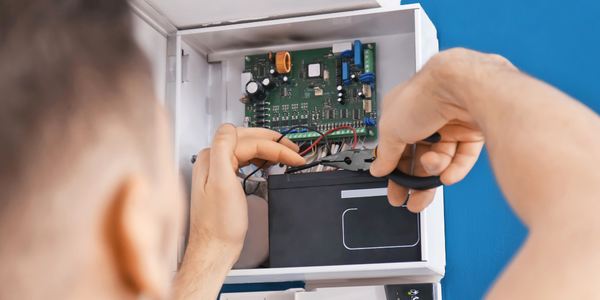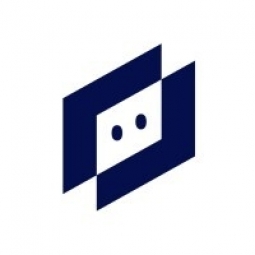Technology Category
- Functional Applications - Computerized Maintenance Management Systems (CMMS)
- Infrastructure as a Service (IaaS) - Cloud Computing
Applicable Functions
- Maintenance
Use Cases
- Behavior & Emotion Tracking
- Leakage & Flood Monitoring
Services
- System Integration
About The Customer
Ohio Public Employees Retirement System (OPERS) is a government organization that provides retirement, disability, and survivor benefit programs for public employees throughout the state who are not covered by another state or local retirement system. The organization has over 250 employees and relies heavily on its server environment to handle critical processes and applications. The Data Engineering (DE) team at OPERS is responsible for scheduling downtime and maintenance for this large-scale server environment, ensuring that the servers can handle the workload appropriately when one is taken down for maintenance.
The Challenge
The Data Engineering (DE) team at Ohio Public Employees Retirement System (OPERS) was responsible for scheduling downtime and maintenance for their large-scale server environment. These servers were crucial for handling critical processes and applications for the business organization. The DE team had to ensure that when a server was taken down for maintenance, the remaining servers could handle the workload efficiently. However, the team lacked visibility into utilization trends or graphs depicting peak usage hours on the servers. This lack of information led to assumptions about server load handling, resulting in significant lags across the business and service delays. Additionally, the DE team was often requested by internal customers, such as operations, finance, and executive management, to provide reports explaining why certain servers were taken offline for maintenance.
The Solution
In early 2021, the IT infrastructure team at OPERS switched from Solarwinds to LogicMonitor due to security concerns and the need for an observability platform to facilitate a smoother transition to a hybrid environment. This migration provided the IT team with new monitoring capabilities and the ability to display key information. They could now create custom dashboards to monitor and log server utilization, a feature that was crucial in their decision to implement LogicMonitor. These custom dashboards also fostered greater collaboration between the IT and DE teams. The IT team granted viewing permissions to the DE team, who began using these new graphs to inform their server maintenance schedule.
Operational Impact

Case Study missing?
Start adding your own!
Register with your work email and create a new case study profile for your business.
Related Case Studies.

Case Study
How Sirqul’s IoT Platform is Crafting Carrefour’s New In-Store Experiences
Carrefour Taiwan’s goal is to be completely digital by end of 2018. Out-dated manual methods for analysis and assumptions limited Carrefour’s ability to change the customer experience and were void of real-time decision-making capabilities. Rather than relying solely on sales data, assumptions, and disparate systems, Carrefour Taiwan’s CEO led an initiative to find a connected IoT solution that could give the team the ability to make real-time changes and more informed decisions. Prior to implementing, Carrefour struggled to address their conversion rates and did not have the proper insights into the customer decision-making process nor how to make an immediate impact without losing customer confidence.

Case Study
Engaging Fans at one of the Largest Stadiums in the USA
Engaging and delighting fans has become the number one priority. However, the identity and behavior of fans within the stadium have been impossible to detect until Sirqul. Furthermore, standalone mobile apps historically have only seen a 5-30% penetration rate, thus leaving venues with poor data, insights and little interaction with the fan itself.This large stadium was looking for a set of recommendations to improve the fan experience, increase revenue and optimize operational efficiency based on this never seen before data.

Case Study
Greater Peace of Mind with Pentair
When severe weather hits, the potential damage to a home could be disastrous. Insurance claims for flooding damage exceed $3 billion per year in the United States, and most homeowners are not even covered for even basic water damage to carpet, drywall, electrical, furniture and personal items. Sump pumps are one of the best defenses against flood damage, but when storms knock out electricity, traditional sump pumps are rendered useless. As a seller of water management and equipment protection, Pentair sought a communication platform that will support a wide range of Pentair Internet-connected products.

Case Study
Cisco Kinetic for Oil and Gas: Refineries and Plants
The plant manager and safety teams needed a solution that provided near real-time visibility of gas detection and personnel location, with easy to understand visualization and alerting dashboards. This would enable them to improve productivity through decreasing the time taken to start work, optimize evacuation route planning, and to meet critical staff safety and compliance goals.

Case Study
MICROMEDIA’S ALERT ASSISTS AIR LIQUIDE’S SCADA SYSTEM FABVIEW
WIN-911’s partner product ALERT is a key element in the Supervisory Control and Data Acquisition (SCADA) system “FabView” from Air Liquide. Air Liquide is the second largest supplier of industrial gasses in the world. This SCADA alarm notification system is specifically designed to monitor, among other things, the distribution of gas in a semiconductor manufacturing plant located in Dresden Germany. Like most operations of its type, this facility can’t afford much downtime in its distribution facility. If ALERT detects a leak in a pipeline, the system evaluates how severe the leak is and transfers the data back to the central site or home office. Once the information is back in the main office, the SCADA alert system then transcribes the data into understandable messages to which employees can respond appropriately.








